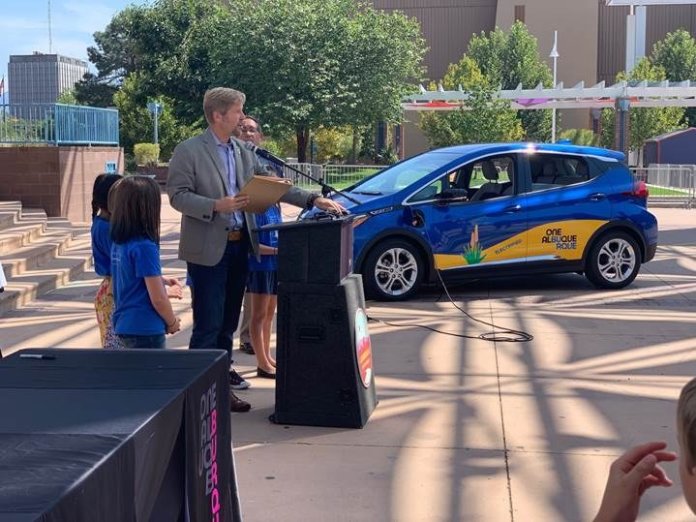Tim Keller, the mayor of Albuquerque, N.M., recently signed an executive instruction (EI) to shift all eligible city vehicles to no- or low-emission.
Eligible vehicles are defined as non-public-safety fleet vehicles that have a low- or no-emissions alternative and whose functional purpose allows for incorporation of the alternative. The city’s fleet has already welcomed its first-ever electric vehicles.
“We can’t afford to wait for someone else to take the kind of bold action on climate change we need to protect our community,” says Keller. “Any realistic effort to fight climate change has to include steps to reduce the impact of vehicles on our air quality and public health. Technology of electric, hybrid and alternative fuel vehicles has steadily improved, and the time has come to turn the page on gas-powered cars and trucks. And as the electric grid becomes solarized, each vehicle replaced with electric will eliminate all future emissions for that vehicle, forever.”
The EI calls for taking eligible gas-powered vehicles off the road as they come up for replacement or when new vehicles are purchased. The EI states the reasons for the major transition in the city’s fleet:
“In the Albuquerque area, vehicles are the largest contributor of hazardous air pollutants and also emit carbon monoxide and precursors which form ground level ozone. These pollutants can cause lung damage and heart disease, shortening human lifespans. Reducing ozone precursors is especially important here because ozone concentrations in our air are close to the federal health-based limit. Vehicles are the primary source of nitrogen oxides, a key ozone precursor.”
The EI also says the use of electric, alt-fuel or hybrid vehicles will have five benefits for the community: (1) reduced dependence on petroleum; (2) reduced tailpipe emissions; (3) reduced ground-level ozone; (4) improved community health outcomes; and (5) continued compliance with the Clean Air Act.




